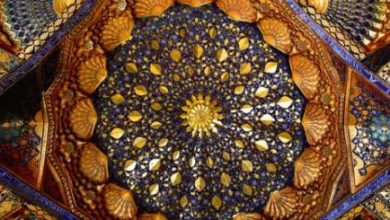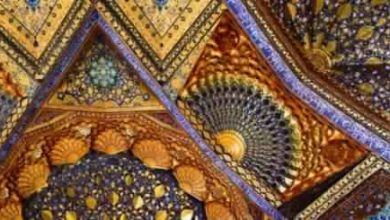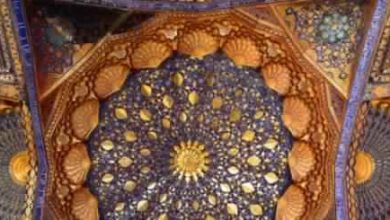THE ESSENCE OF HAJJ – PART 5

Some rituals explained
This article is not intended to discuss the technicalities and regulations in detail, but to explain the essence of each component of the hajj ritual.
Talbiyah
The call of “labbaikallah humma labbaik” is a familiar chant to those who have been for umrah or hajj. This are the words originally commanded by Allah to be uttered by Ibrahim AS when he had and his son, Ismail AS, finished the construction of the Ka’bah. At that point in time, no one heard his call. Countless generations later, people are still repeating these very words.
The talbiyah should be said aloud by the men and discreetly by the women on the approach to Mekah. It is a declaration that we are going to serve Allah, the way a willing and devoted slave serves his master. The talbiyah is a testimony of our gratitude to Allah for all His bounties, that the entire realm of existence belongs to Him, and that we do not associate anything with Him.
One cannot help but feel spiritually charged when uttering these words, especially when in a group, and this builds up the anticipation and momentum. While repeating these words, think about how much Allah has given us, and how eager we are to serve Him in return. We have nothing in life but what Allah gave us, but how much do we utilise our bounties to serve Allah? The talbiyah slowly eases you into the state of mind of the purpose of your trip, and you will find your eagerness to immerse yourself into the wonderful journey of hajj increasing.
Ihram
This is the state of ritual purification and to dress in the clothes of the ihram – as mentioned earlier, two pieces of unstitched cloth for the men. One piece is wound around the waist and the second is put around the shoulder. The head should be uncovered. Women are allowed to wear any form of loose clothing which meet the Islamic requirements of covering the awrah so that it is appropriate for prayer. Our advice is to make sure that the clothes are secure, so that the awrah is not accidentally exposed while performing tawaf or sai’ee.
The state of ihram is to be entered into at the miqat (boundary) of Mekah, and this location differs depending on your entry point to Mekah and the mode of transport. Your hajj guide will advice you on the appropriate time to enter into the state of ihram. Once in ihram, strict injunctions apply. Sexual contact is forbidden, and one is not even allowed to wear any fragrances. There are other rules and regulations which you can research separately and in more detail.
Once in the state of ihram, you can see the physical reality of the next steps of the hajj coming to life.
Tawaf
Upon arrival in Mekah, it is recommended to perform the umrah (tawaf and sai’ee) as soon as possible. The tawaf involves walking counter clockwise around the Ka’bah seven times. The ease of performing the tawaf and also the duration depend on the size of the crowd. It is ideal to perform the tawaf directly in front of the Ka’bah, but if conditions do not permit or if the person requires disabled access or wheelchair assistance, the tawaf can be performed at the areas allocated within Masjid Al Haram.
For many, this is the time when you catch the first glimpse of the Ka’bah. At the first glance (or even the first time you see the Ka’bah after a long time) remember to supplicate to Allah for the best in this life and the hereafter.
The process of tawaf and sai’ee can overload the senses. They can be both physically and spiritually overwhelming. When you are caught in the moment, it is easy to forget all the carefully planned recitations and supplications you had prepared. Rather than fumble around for your du’a book, we suggest that you write all the key du’a in bullet point on a piece of paper and carry it with you.
Reactions to being in the proximity of the Ka’bah differ, so don’t compare reactions with others. It is a highly individual experience. Everyone comes to the Ka’bah with a different back story and personal baggage.
We suggest to perform the tawaf individually if you can, and not in a large group. Identify a landmark for a meeting point after the tawaf, and then perform the tawaf on your own. If you are not confident of your way around, then stick to the group. However, you might end up being so worried about being separated from everyone else that this will overshadow your tawaf and disrupt your devotion. We also find that loud du’a and repetitive chanting by groups are less favourable, because it dampens that wonderful and personal communication between you and Allah.
Do not be worried if you are so overwhelmed that you have forgotten all your du’a. Speak to Allah from your heart, and not from a script. In such a situation, recite whatever tasbeeh or Qur’anic passages you can remember. Make whatever du’a that comes to mind. Even a simple “Allahu Akbar” is powerful if said with sincerity. Don’t be worried if you are not eloquent, or cannot articulate your Arabic phrases as beautifully as the person next to you. This is your special time with Allah, and He knows the jumbled up condition in your mind and heart, as well as your strengths and limitations.
For the men in ihram, the left shoulder should be covered and the head and right shoulder should be exposed. The first three rounds should ideally be performed with more vigour, originally to demonstrate strength to the non-believers.
The tawaf is not a race. After all, is there somewhere else you need to be instead? You don’t get extra points for finishing early, so don’t rush the process!
Also, remember not to harm anyone. It can be easy to get angry when you are shoved aside, and you must not entertain the instinct to shove back in return. The person in front of you may be slow and obstructive, if so, manoeuvre around that him. Do not block or push others. If someone pushes or hurts you physically, don’t retaliate. You may be a guest of Allah, but so are they. Forgive them the way you want Allah to forgive you.




